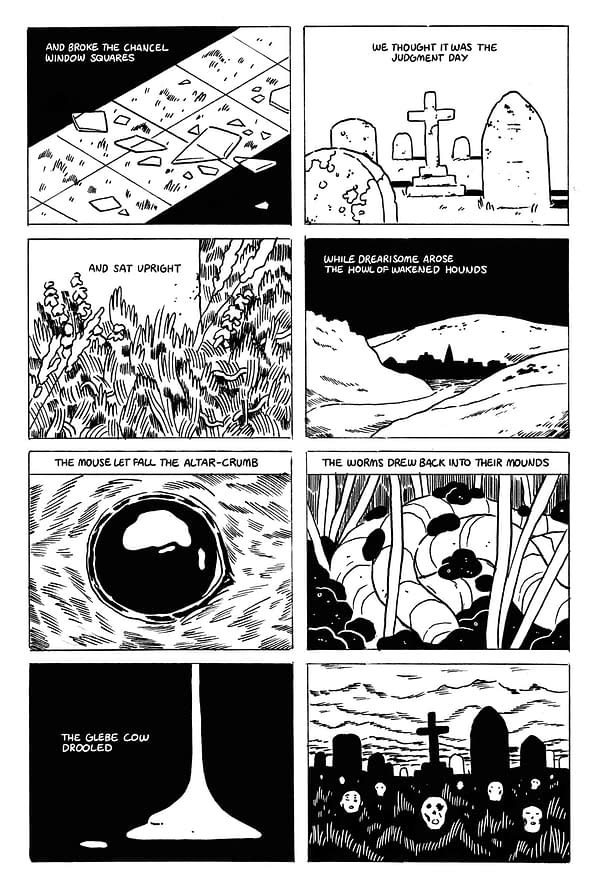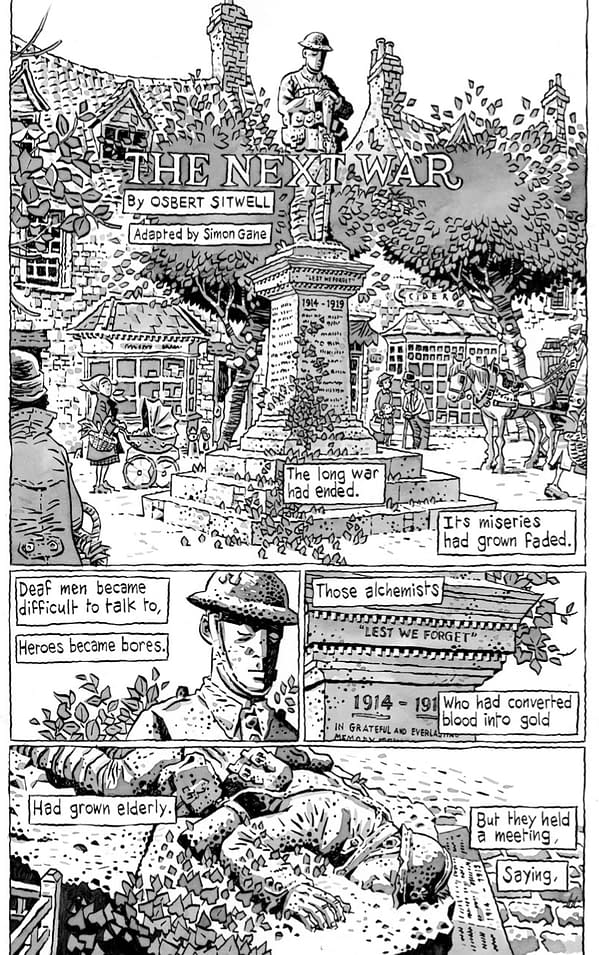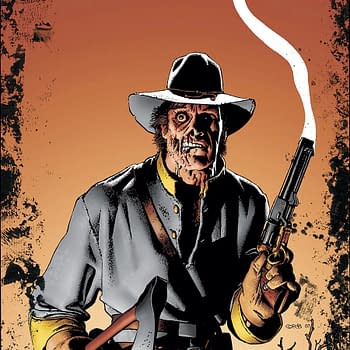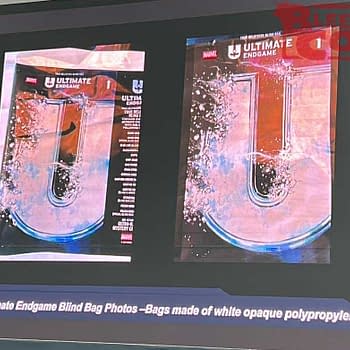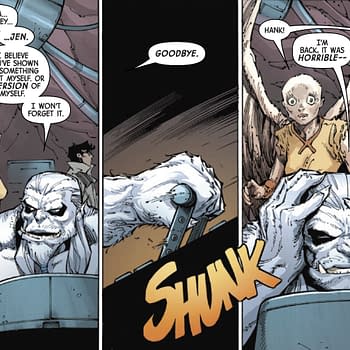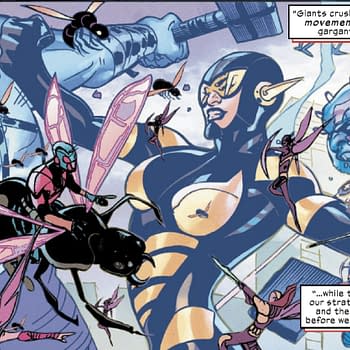Posted in: Comics, Recent Updates | Tagged: Above the Dreamless Dead: World War I in Poetry and Comics, anders nilsen, Chris Duffy, David Hitchcock, eddie campbell, first second, garth ennis, Hunt Emerson, Kevin Huizsenga, Lilli Carre, Luke Pearson, Pat Mills, phil winslade, Sammy Harkham, Simon Gane
World War I Trench Poets Illustrated By Host Of Comics Greats In Above The Dreamless Dead
By Cameron Hatheway
When it comes to the world wars, the second one always gets the most coverage nowadays. And it makes sense, since it's the most recent and we still have people alive from that time. Even in pop culture there are always references and stereotypes that comes along with it; whether it's all Germans are Nazis, all French are cowards, or all Americans are of the "You're welcome, world" mindset. Because of the rise of the "Hitler Channel" (History Channel) in the early 2000s, that's all that got coverage before Ancient Aliens and Pawn Stars took over. Viewers knew every inch of World War II, and ever since then have been trying to predict how the third one will eventually start.
But what about the Great War? Have we simply forgotten about this tragic period in time? I'll admit, outside of school my only exposure of World War I and the horrific trench warfare that took place was from episodes of The Young Indiana Jones Chronicles, All Quiet on the Western Front, and Black Adder. World War I didn't have any Private Ryans that were saved or any bastards that were inglorious; the biggest thing to remind audiences of its place in history is Ernest Hemingway and Lawrence of Arabia.
2014 marks the centennial of World War I, and First Second Books has perfectly timed the release of their latest graphic novel Above the Dreamless Dead: World War I in Poetry and Comics. Edited by Chris Duffy, the book features several talented artists who each have adapted a poem by one of the famous trench poets of the time. Poets like Wilfred Owen, Isaac Rosenberg, and Siegfried Sassoon come to life through the medium of comics and all the mixed media that goes along with it. While the imagery in a lot of the comics are dark and eerie, Eddie Campbell said it best: "It's a bit preposterous thinking we can illustrate this stuff that we know nothing of." However the artists still tried, and definitely hit the mark.
The book is divided into three different sections: "The Call To War," "In The Trenches," and "Aftermath." Obviously "In The Trenches" is the biggest section, but it's fascinating seeing the beginning, middle, and end of the war through the perspective of the solider poets themselves. Luke Pearson, Hunt Emerson, Simon Gane, Sammy Harkham, and Kevin Huizsenga take on the "The Call To War" section, adapting poems by the likes of Thomas Hardy, Charles Sorley, and Francis Edward Ledwidge who chronicle the beginnings of the conflict through prose. Throughout each of the sections there's a soldier's song illustrated by Emerson, whose art style fits wonderfully to add a sprinkle of humor in an otherwise disheartening tone.
One of my favorite adaptations from the "In The Trenches" section was Campbell's adaptation of a concluding chapter from Patrick MacGill's novel The Great Push. It's a bleak, haunting story that definitely sends chills down the spine with the illustrations. Another enjoyable adaptation was Garth Ennis and Phil Winslade's take on Sassoon's The General. Winslade's crisp, intricate imagery really transports the reader back to that time. He used the book The Faces of World War I as reference, and because of it the final product is amazing as it is historically accurate. Other adaptations in this section include Peter Kuper, George Pratt, Hannah Berry, Emerson, Isabel Greenberg, Stephen R. Bissette, Sarah Glidden, Kathryn & Stuart Immonen, Lilli Carré, and Pat Mills and David Hitchcock.
"Aftermath" is a fitting conclusion to both the war and the graphic novel. The Next War by Osbert Sitwell, adapted by Simon Gane is extremely reminiscent of a Hellboy one-shot. Gane's style reminds me of Duncan Fegredo and even bits of Mike Mignola himself. Repression of War Experience by Sassoon and adapted by James Lloyd is another gem in this section, as it touches upon the "shell shock" of Sassoon (later known as "post-traumatic stress disorder"). Lloyd even gives a little summary of what happened to Sassoon after the war, and the evolution of the different terms applied to post-traumatic stress disorder throughout the many different wars. Other adaptations in this section include Liesbeth De Stercke, Danica Novgorodoff, Carol Tyler, and Anders Nilsen. Included in the back of the book are notes on each of the adaptations, information on the poets themselves, and what other works the comic contributors have accomplished.
Overall, Duffy managed to breathe life back into an era of history that is sometimes forgotten with the unique blend of poetry and comics. Above The Dreamless Dead succeeds in offering comic readers and poetry lovers something intoxicatingly different, highlighting one of the best things about mixing media in the comics medium. With so many talented artists who helped contribute to this project, it would be a crime for it not to be nominated for an Eisner or three next year. What better way to celebrate the centennial of World War I than to read some poems from the brave soldiers who fought in it?
Above The Dreamless Dead: World War I In Poetry And Comics
Edited by Chris Duffy
First Second Books
144 Pages, B&W
$24.99
Cameron Hatheway is the host of Cammy's Comic Corner, an audio podcast. You can share with him your own soldier's song on Twitter @CamComicCorner.





